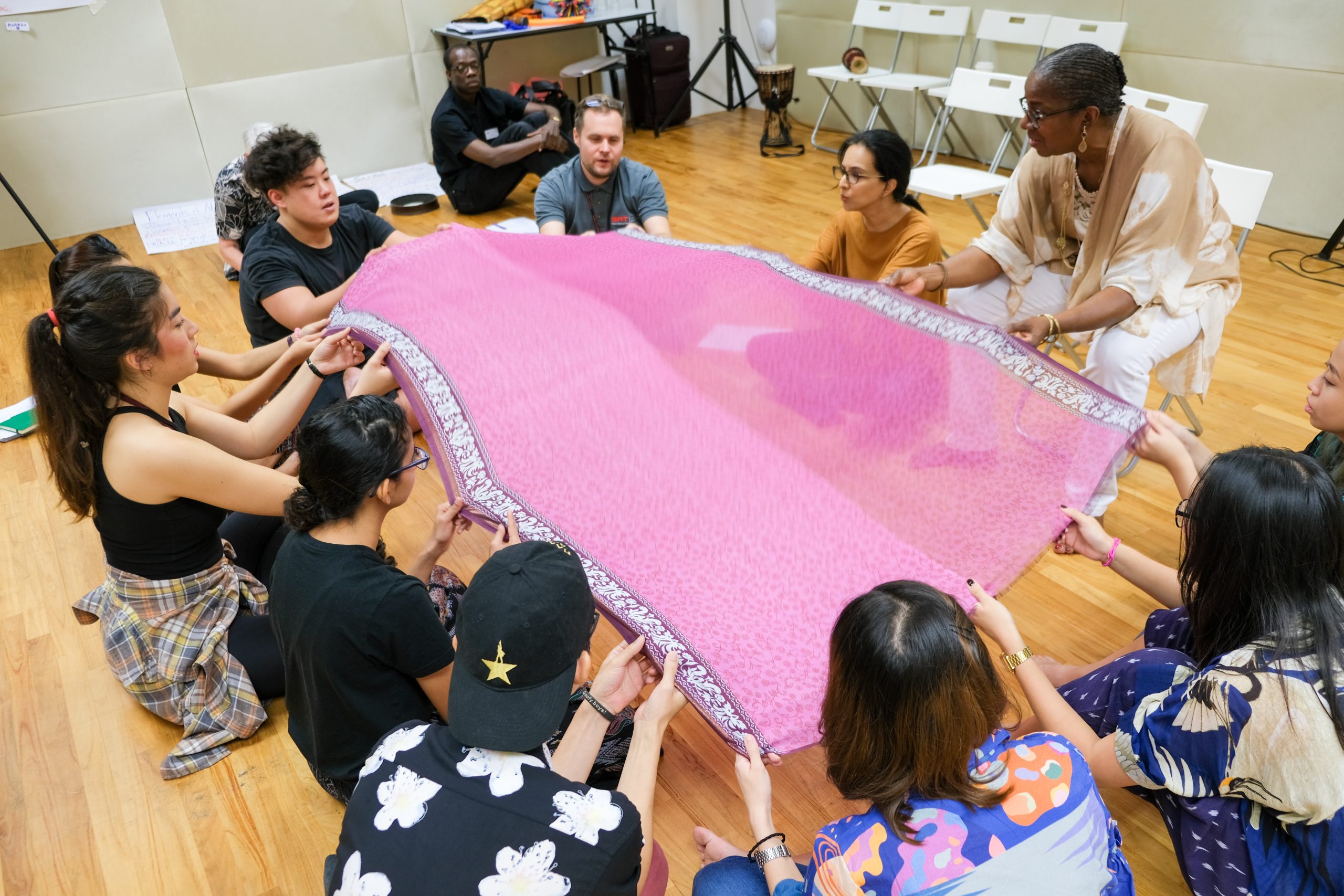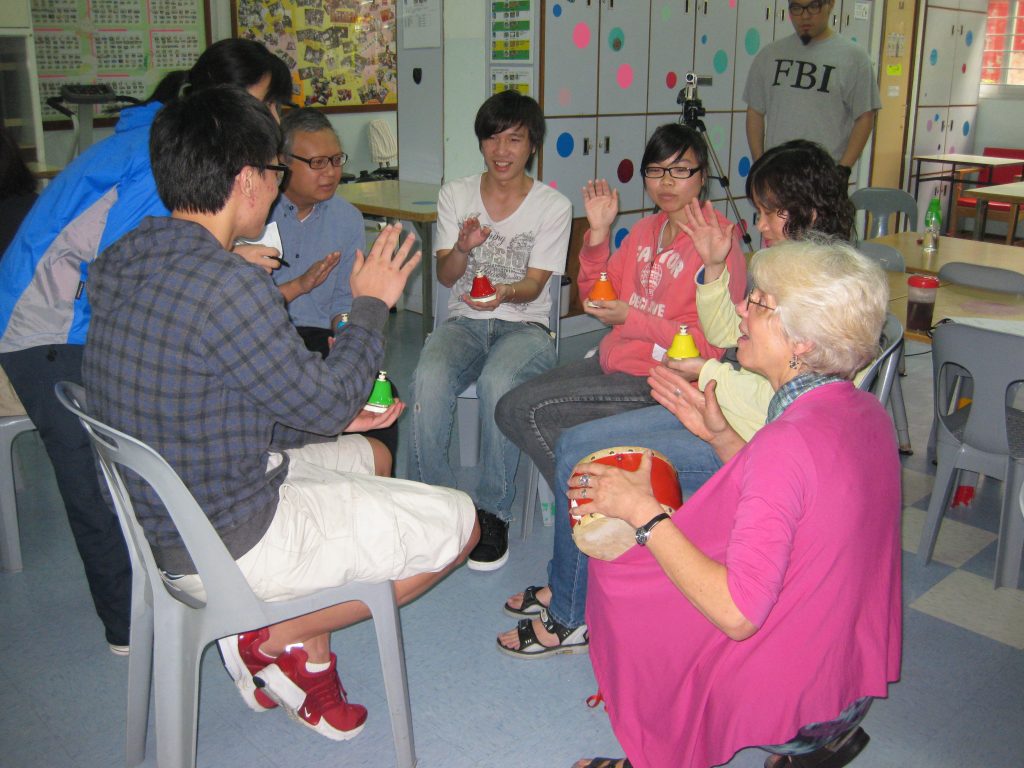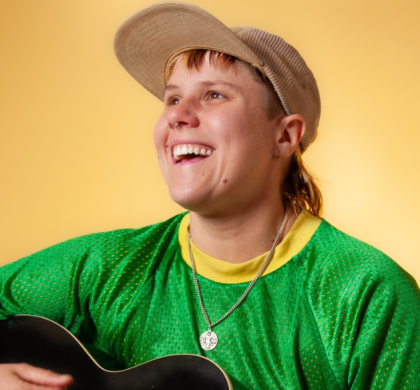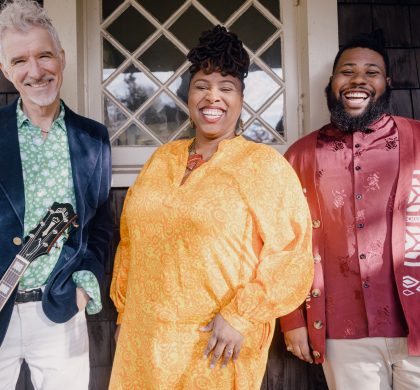Global Influence

Oct 24, 2024
Wolf Trap Master Teaching Artists Share What They’ve Learned from Their Experiences Working Internationally
We are more alike than we are different. This is the observation that Wolf Trap Master Teaching Artist Terlene “Ms. T” Terry-Todd has made, following years of working with early educators in the U.S. and abroad and witnessing the influence of the arts in educational settings.
Ms. T is one of many Wolf Trap Master Teaching Artists like Sue Trainor, Valerie Branch, Valerie Bayne Carroll, Wincey Terry-Bryant, and Christina Farrell, who have traveled outside of the United States to conduct new artist trainings, classroom residencies, professional development workshops, and family workshops in Africa, Asia, the Caribbean, and Europe. Whether conducting professional development trainings separately or alongside each other, each engagement has provided an opportunity for the teaching artists to broaden their understanding of what arts integration looks like in different learning environments and return with a different perspective on their work.
Improvisation and Adaptation
Many of Wolf Trap’s teaching artists attest that working in different classrooms always requires a certain amount of adaptation: one can come in with a plan, but that can easily be upended by a variety of variables, from space limitations to variations in language or dialect, or the need for special accommodations for children with neurological or physical differences. The key, they’ve learned, is their ability to improvise, when required, and adapt to a changing environment.
While English is a primary language in the countries Trainor has worked in, she still had to account for some unexpected language differences. “Words–especially idioms–don’t convey the same meanings,” she recalled from her three-day training in Hong Kong. “It was a partner dance to learn that [when] something hadn’t been clear to all, [we had] to figure out what’s missing, and devise more ways to share a particular idea,” an experience she later applied not only to her work in Singapore but to her everyday practice.
Ms. T recalls a time when the space she was conducting a workshop in experienced power difficulties: “My improvisation skills kicked in and I had the groups freeze dance in the dark in their personal space. I used an instrument to provide a steady beat, and provided the [verbal] cues ‘stop’ and ‘go,’” she says. “The groups discovered basic dance elements of time, shape, and non-locomotor movement; the session went on for twenty minutes in the dark, but the teachers never missed a beat!”
While events like a power outage can just as easily occur in any location, it helped Ms. T learn how to adapt her strategies to a different environment and harness the imagination and creativity of the educators she was working with so that arts learning could still take place.
In some areas resources were more plentiful, while they were more limited in others, as was the case during Carroll’s residency in Bangalore at the Academy for Severe Handicaps and Autism (ASHA). Instead of relying on props or instruments, Carroll adapted her music and drama strategies to arts experiences that teachers could accomplish using the materials they had in the room.

Arts as a Unifier
During her classroom residencies in Singapore, Terry-Bryant felt particularly moved by the warmth and openness of the classroom teacher she worked with, and tries to replicate those qualities into her own work. “The way she participated served as a strong model that let the students know it’s safe to join in and enjoy the experiences,” she said.
Terry-Bryant was similarly inspired by witnessing “How the arts is its own language and through it, you can communicate with people of any age or language. Although the students [she worked with] didn’t have a lot of English vocabulary, they followed along with the lesson, moving, and repeating words, chants, and songs.”
Trainor was pleased to learn how highly Singapore values the arts, diversity, and arts learning. While she and the training artists she worked with in both Singapore and Hong Kong came from different backgrounds, “because I was working with artists, we had something of a common culture in that regard, so the differences weren’t so obvious as they might have been.”
This commonality was present in the teaching artists’ work with educators, as well as in their work with children.
“No matter where I traveled, children are children, and they love to learn through movement, music, and creative play,” says Ms. T. “[In each place I have conducted residencies] I found the teachers to be very excited and receptive to new ideas.”
Like others, Terry-Bryant and Trainor both reflect on their time in Singapore and Hong Kong as a “career highlight,” not only for the knowledge they were able to pass on to others, but for the knowledge that they gained from their experiences.
Ms. T shared, “It has provided a unique opportunity to collaborate with teachers, learn new traditions, and share cultural experiences.”
Recommended Posts

Jamming with Jules: Music for Kids of All Ages
Jul 21, 2025 - Education, Experience, For Kids, Institute, Summer


